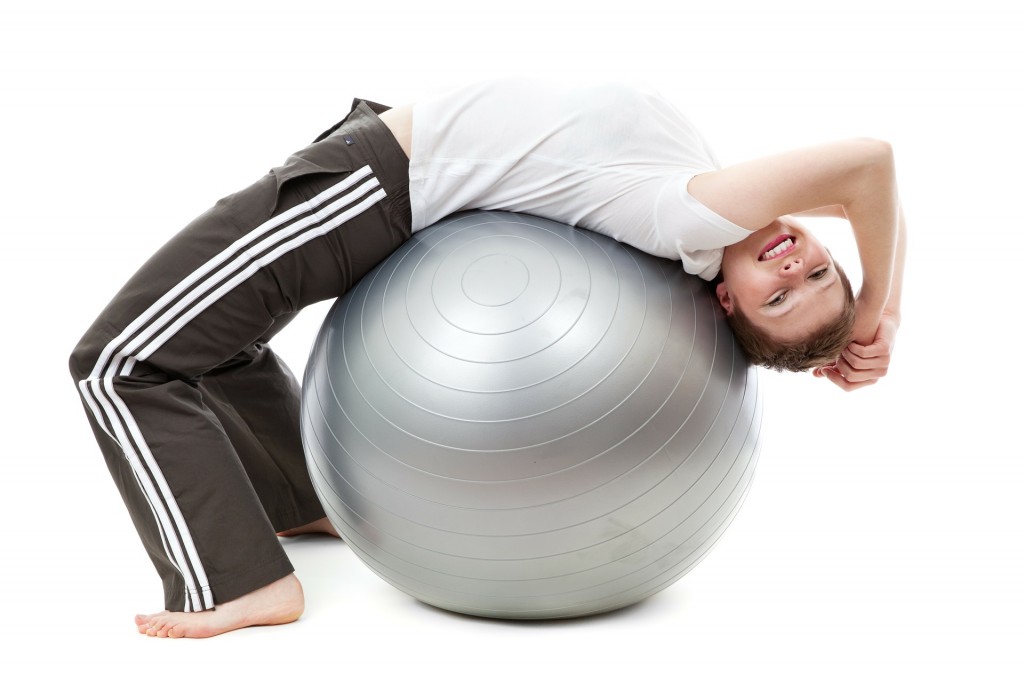The Right Equipment and Accessories in Your Office Can Enhance Your Health
By Carla Firey Shives
How many hours do you spend working in your home office? The average American works for 9.3 hours each weekday, according to Bureau of Labor statistics. So if you own a home based business, you could be spending more than 46 hours a week in your home office!
You may not realize it, but your office space could be affecting your health. Uncomfortable furniture, poor lighting, stagnate air and the wrong accessories may be contributing to muscle aches, eye strain, illnesses and even decreased productivity.
“The more time you spend in a home office, the bigger impact it has on your health,” says Norma Lehmeier Hartie, author of Harmonious Environment: Beautify, Detoxify & Energize Your Life, Your Home & Your Planet. Because of this, it’s smart to create a healthy office environment.
“Fortunately, it’s not difficult to design a healthy and harmonious space,” promises Hartie. The right furniture, accessories and décor can help improve your fitness, enhance your mood and boost your overall health. Just take these steps to turn your home office into a healthy haven:
Purify Your Air
Indoor air can be up to five times more polluted than outdoor air, according to the U.S. Environmental Protection Agency. And since houses are better insulated these days, allergens and toxins stay tightly sealed inside your home, causing them to be even more concentrated than those found outdoors. When the weather is nice, open a few windows to ventilate the room and circulate fresh air, suggests Hartie. During days when the windows must be kept shut, detoxify the air in your home office with a small air purifier. They’re available at most home supply or hardware stores and are simple to operate. Simply plug into an outlet and flip on the switch! The only maintenance required is occasional cleaning or changing of the filter. If you rarely open the windows, you should run the purifier 24/7. At the very least, make sure it’s running whenever you’re in your office.
Go Ergonomic
Do you suffer from neck pain or back strain at the end of a workday? “In many cases, the problems that lead to persistent physical discomfort can be fixed by simply improving the workspace setup,” said Tim Shipley, Marketing Manager at Fellowes, Inc., a company that manufactures ergonomic office accessories. To reduce arm, hand, wrist and finger strain—which can lead to carpal tunnel syndrome—make sure your chair and computer keyboard are placed so your forearms are parallel with your thighs when you type. Protect your back with a chair that offers sufficient lumbar support, and position your computer monitor at eye-level to prevent neck and shoulder pain. The best position for your feet is resting flat on the floor. If your feet dangle when you’re sitting in your chair, use a footstool. Ideally, your knees should be bent at a 90-degree angle and your thighs should be parallel to the floor. Adjustable chairs are useful for getting your body into the proper position, and you might also consider purchasing specially designed ergonomic furniture to eliminate other musculoskeletal health hazards.
Make Space For Exercise
It’s not always easy to find time for exercise during a busy workday. But if you incorporate fitness into your home office, you’ll have a better chance of squeezing your daily workout into your schedule. When space constraints are an issue, consider exercise equipment that’s specifically designed for small spaces or offices, such as mini-steppers or mini-cycles. They’re small enough to be stored in a closet or under your desk, yet they still help provide you with a quick workout. Less expensive alternatives include a jump rope or yoga mat. Large home offices may have enough space to accommodate a treadmill, stationary bicycle, or elliptical machine. This type of exercise equipment can be utilized when you’re reading, talking on the phone, or watching the news on television. There are even specially designed workstations that allow you to use a computer while walking on a treadmill!
Reduce Dust and Dander
Unlike hard surfaces, fuzzy carpets are magnets for dust, dander and other unhealthy substances. In fact, scientists have found that carpet dust is loaded with chemical pesticides that are toxic when inhaled, and these toxins contribute to lung diseases like asthma. Wooly carpet seems to attract dirt and debris, and our feet actually push the dust even deeper into the fibers as we walk across the floor. As a result, your rug is always slightly soiled no matter how much you vacuum and clean. Because of this, Hartie recommends removing your carpet to help get rid of the poisons that are lurking in your home office. Replace the floor with an easy-to-clean surface, such as hardwood or tile. These types of hard floor can be thoroughly cleaned with a broom, and there are no fibers to provide hiding spots for dust. By switching from carpet to a hard surface, you’ll be able to effectively and completely remove toxic dirt and debris from the floor of your home office.
Paint for Productivity
Beige or cream colored walls may be a versatile choice for your home office, but they could be affecting your work! Psychological studies suggest that colors can influence your emotions. And since your mood can affect your productivity, it’s important to choose the right color when you paint your home office walls. “The best color for enhancing your creativity and intellect is blue,” says Hartie. If changing the color of your walls seems too dramatic, consider adding a dash of color with accessories. Try hanging some blue artwork on the walls or covering a table with a blue cloth. You can also utilize some other colors for the effect you desire. For example, a red pencil holder will stimulate you, and a purple chair will have a calming effect. Even small bits of color around your home office can change your mood and boost your productivity.
Illuminate your Work
Light that’s too dim in your home office can cause eyestrain as you struggle to read a book or view your computer monitor. Light that’s too bright creates distracting glares that can cause headaches. But installing the right type of lighting can help keep your eyes relaxed and your focus on the job. Moreover, it’ll prevent vision strain that can cause tension headaches and dry eyes. According to the American Lighting Association, two large lights installed in the ceiling are the best way to reduce glares and shadows. It’s recommended that you place your workstation between the overhead lights so that one light is to the right and the other is to the left of your desk. If you need additional light on your keyboard or desk, the association suggests using an adjustable table lamp to illuminate specific spots.
If you normally end your day with a backache and blurred vision, it may be time to make a few changes to your home office. Simply rearranging some furniture and adding a few accessories can help reduce many of the health hazards that are associated with spending long periods of time in a small space. With some minor adjustments, you’ll be healthier, happier and more productive at work! HBM
Find a Home-Based Business to Start-Up >>> Hundreds of Business Listings.















































